
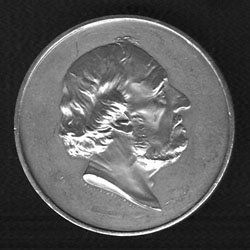
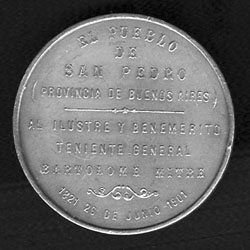
President of the Argentine Republic 1862-1868
Obverse: Portrait head facing right of Lieutenant General Bartolome Mitre, Bellagamba Y Rossi under bust.
Reverse: EL PUEBLO curved above / DE / SAN PEDRO / (PROVINCA DE BUENOS AIRES) / (divider) / AL ILUSTRE Y BENEMERITO / TENIENTE GERERAL / BARTOLOME MITRE (divider design) / 1821 26 DE JUNIO 1901 / around below. The Town of San Pedro in the Province of Buenos Aires. THE ILLUSTRIOUS BENEMERITO LIEUTENANT GERERAL BARTOLOME MITRE, 1821 26 June 1901
Ag 56MM struck by Buenos Aires firm of Bellagamba & Rossi to commemorate 80th Anniversary of General Bartolome Mitre.
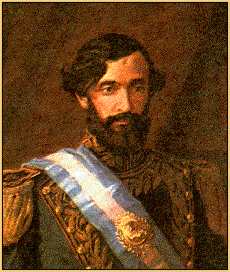
He created a national administrative structure in Buenos Aires, set about the
construction of railroads, and encouraged immigration.
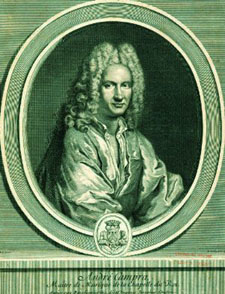
ANDRE CAMPRA 1660 -1744
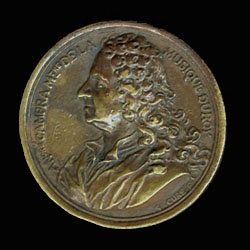
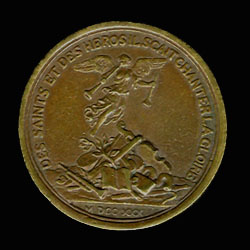
Obverse: Portrate facing left, inscription around: DES SAINTS ET DES HEROS IL SCAIT CHANTER LA GLOIRE (SAINTS AND HEROS IL SCAIT TO SING GLORY) S.CURE F. Artist name below trunction.
Reverse: Angels with horns above musical instruments, inscription around: ANDRE CAMPRA MTRE DE LA MUSIQUE DU ROY (Andre Campra maitre de music of Notre Dame, The Royals protection of the Regent, Philippe d'Orléans)
Date in Roman Numerals below: M DCC XXX =1730
FOOTNOTE: André Campra (1660-1744) Born in Aix-en-Provence as son of a surgeon, he joined the church choir aged 14 and went on to ecclesiastical studies four years later. He occupied a leading position in French music of the early 18th century. After an earlier career in Toulon and Toulouse, he moved to Paris, where he became maître de musique at Notre Dame and finally won distinction in the opera-house, composing for the Académie Royale de Musique and employed also by the chapelle royale. Campra's first success in the theatre came in 1697 with L'Europe galante, an opéra-ballet with entrées for France, Spain, Italy and Turkey. He continued to write opéra-ballets and tragédies lyriques, generally to be staged at the Paris Opéra. Between 1700 and 1720, he composed a number of successful operatic works. In 1735, at the age of 75, he began to retire and died in 1744, respectable 84 years old, in relative poverty.